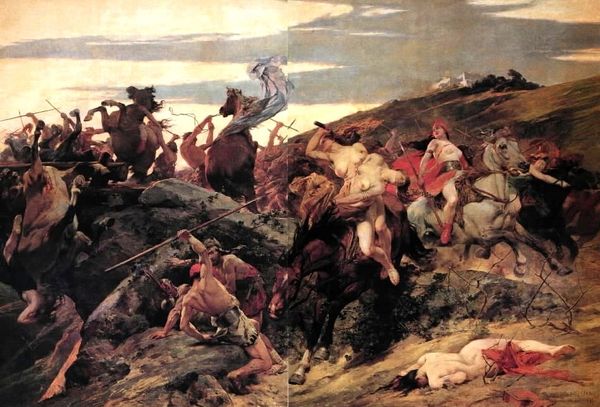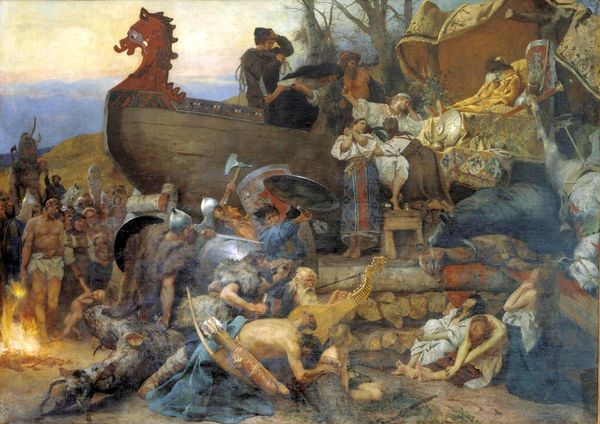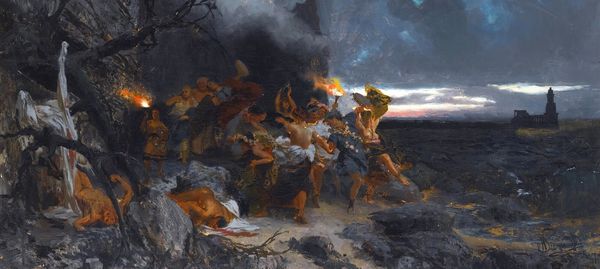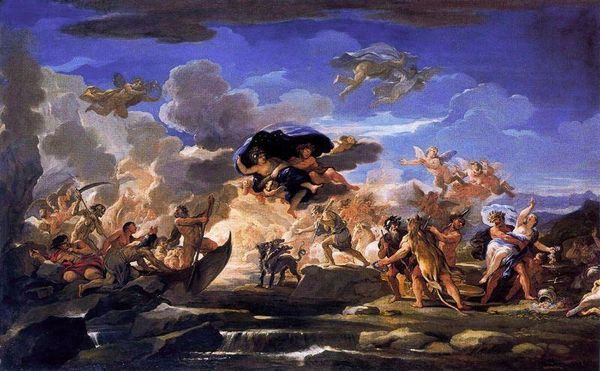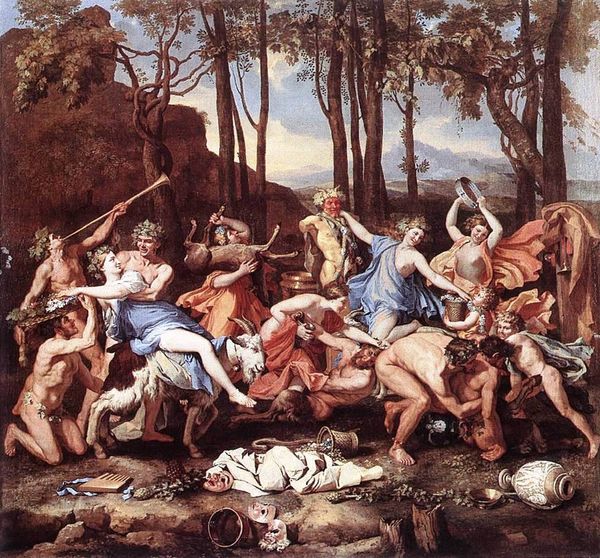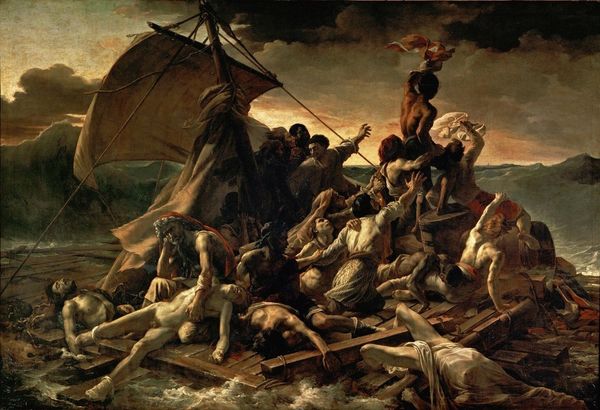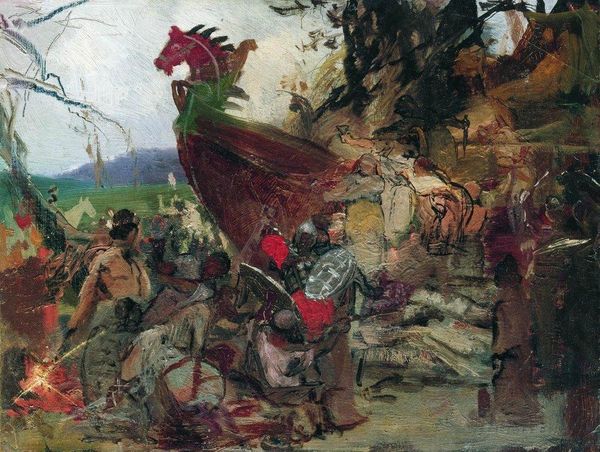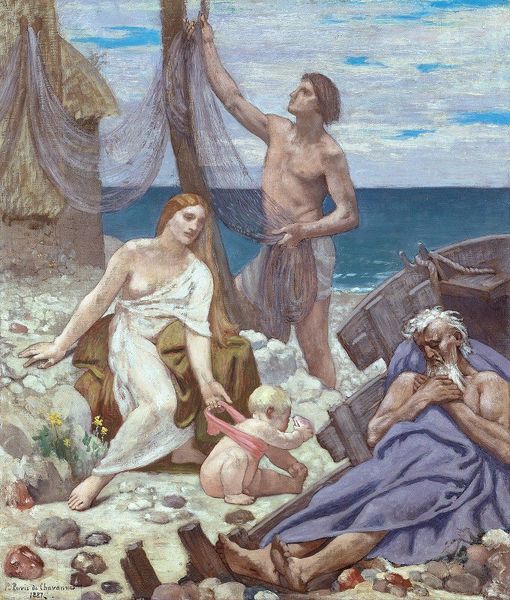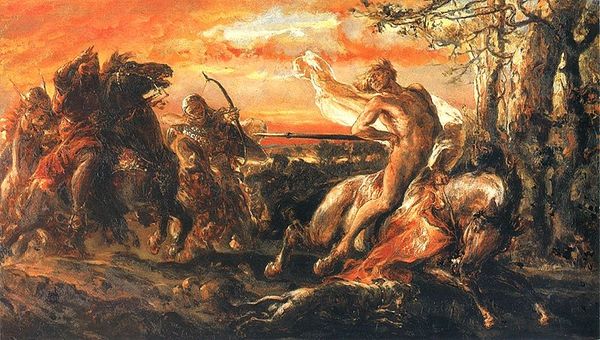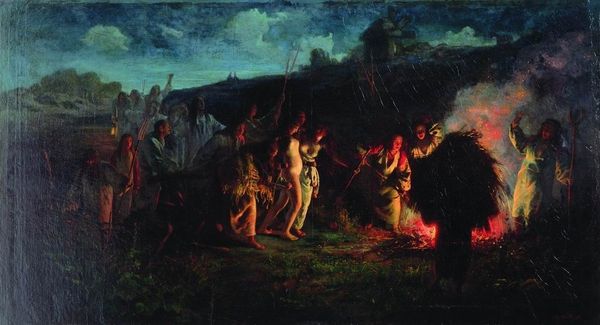
Dimensions: 101.5 x 216 cm
Copyright: Public domain
Curator: Henryk Siemiradzki’s epic oil on canvas, “Orgy of the Times of Tiberius on Capri,” painted in 1881, presents a tumultuous scene awash in dramatic lighting. Editor: My first impression is one of unease. The palette is dominated by cool blues and grays, with the flickering torchlight casting an eerie glow on what appears to be a chaotic bacchanal. Curator: Indeed. The figures, a mix of revelers and perhaps victims, are arranged along a jagged coastline. Note how the composition divides the scene. On the left, we have what could be interpreted as the consequences, and on the right, the continuation of excess. Editor: I see the dichotomy. The left side carries the visual weight of what appears to be sacrificial remains, and the cross hanging on the rock feels almost like an anti-sign, the opposite of salvation and faith, overshadowed by indulgence. The juxtaposition implies a specific reading. Curator: I agree, that symbol seems a dark marker of an old and tired theme in western culture. What the artist seems to be presenting us with here is not just an observation of structure, but an ethical concern in a narrative where one has seemingly given over to primal needs. We see how Siemiradzki expertly utilizes classical-realist brushstrokes to detail musculature and drapery, focusing particularly on rendering light as a symbolic entity. Editor: Symbolically, I see the lighthouse in the distance on the right serving as an ironic beacon. Ostensibly offering guidance, it feels remote, almost mocking, considering the surrounding depravity. This seems to be a direct representation of the collapse of societal values, a condemnation. The stormy sea reflects not only the geographical location, but also the inner turbulence of those represented. Curator: I find it striking how Siemiradzki's academic art background is apparent here. Despite its subject, the canvas showcases technical precision rather than emotional spontaneity. I understand his position and approach. Editor: And yet, beneath that layer of precision, the lasting image in cultural memory seems to represent something deeply uncomfortable, pointing toward enduring narratives of corruption, punishment, and moral decay. A chilling interpretation that asks, even in supposed enlightenment, what we've truly lost. Curator: It is, decidedly, an artwork that prompts serious thought. Editor: Agreed.
Comments
No comments
Be the first to comment and join the conversation on the ultimate creative platform.
